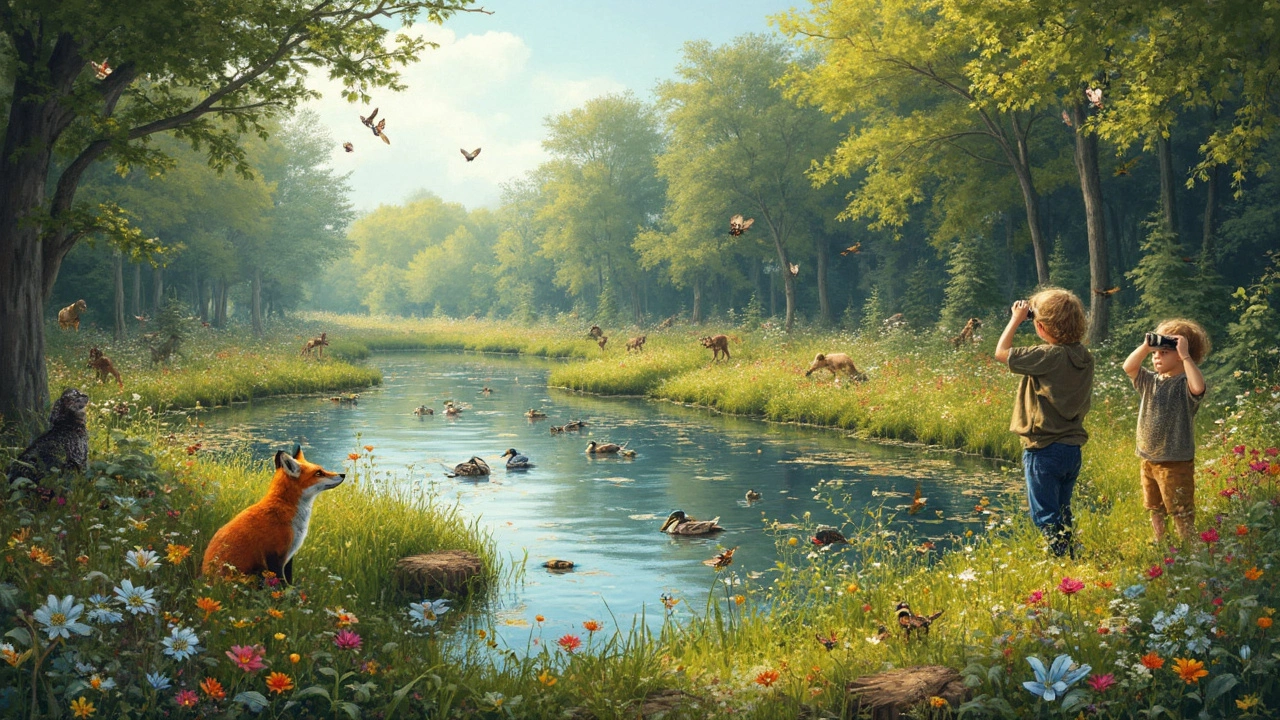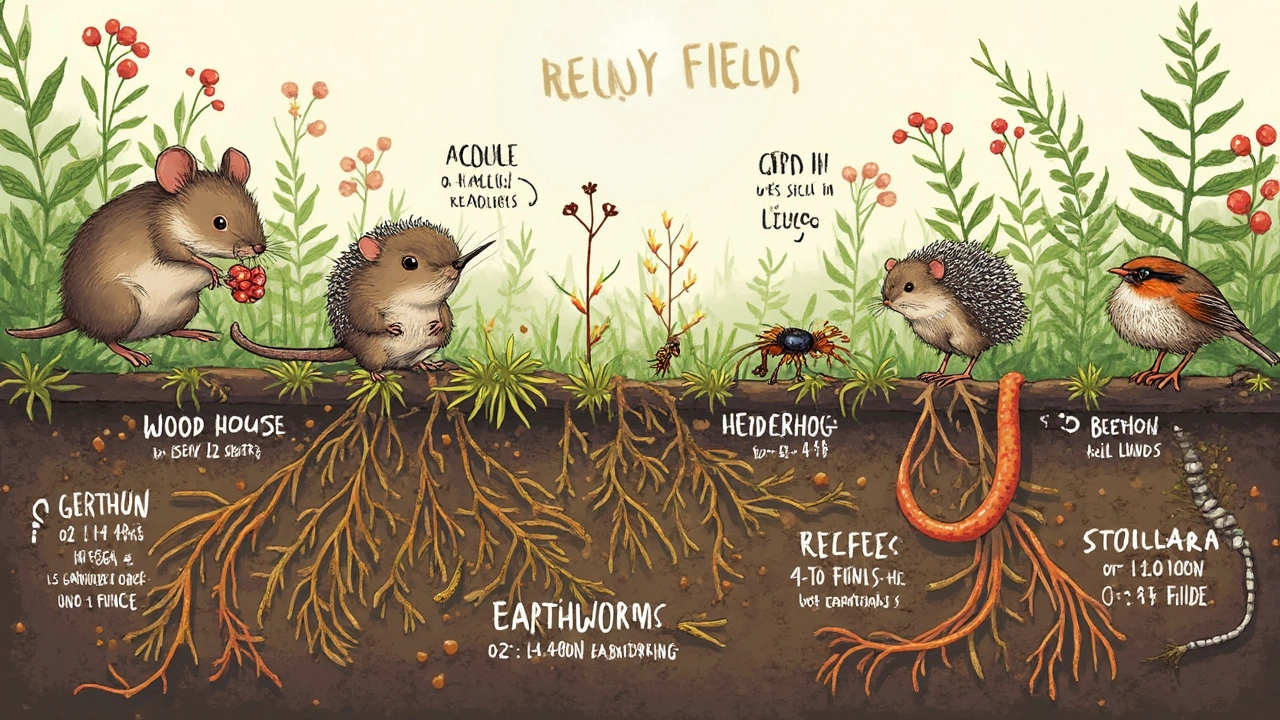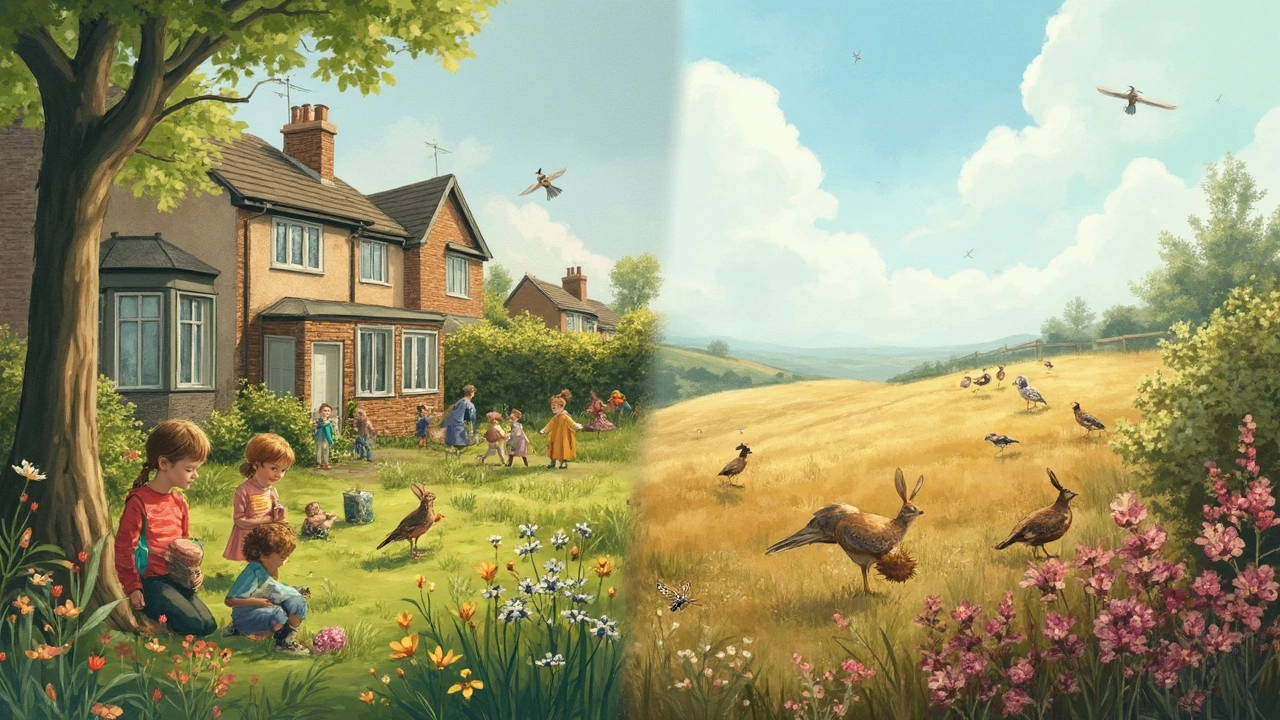Types of Communities in the Ecosystem: Know Your Environmental Groups
 Jun, 14 2025
Jun, 14 2025
Ever walked through a forest and wondered who's really living there besides the squirrels and birds? In the wild, a community isn’t just a bunch of animals and plants hanging out. It’s a group of different species living together and interacting in specific ways—think of it like all the tenants in an apartment building, but with far more drama and way cooler survival tricks.
Understanding these community types matters way more than most folks think. If you want to protect local habitats, get the hang of your garden, or even just sound smart on a hike, knowing how communities work gives you an edge. Ecosystem communities aren’t random; each has its own structure, major players, and big impact on the world around it. For example, some are super diverse, while others are made up of just a handful of tough survivors.
- What Is a Community in an Ecosystem?
- Major Types of Biotic Communities
- Microbial Communities: The Tiny Majority
- Human Impact and Urban Communities
- Tips for Spotting and Understanding Ecosystem Communities
What Is a Community in an Ecosystem?
When people talk about an ecosystem, most imagine a forest or lake, but the real story is about the communities inside. In a nutshell, a community is all the living things—like plants, animals, fungi, and even tiny bacteria—sharing a space and interacting with each other. It’s more than a list of who’s there; it’s all about what they do and how they shape each other’s lives.
Scientists use the word "community" to point to groups of species in the same place, all getting by together. These interactions aren’t just casual, either. You’ll see animals eating plants (herbivores), predators chasing prey, and bees pollinating flowers. Some species compete over resources, while others, like clownfish and sea anemones, team up for survival. These are textbook examples of what builds a community.
A classic fact: a single square meter of rainforest can have more than 200 different plant species. Compare that with an Arctic tundra spot, where sometimes it’s just a handful brave enough to stick it out. The type and number of species depend on things like climate, soil, water, and light.
Every community type has clear boundaries, even if you can’t always see them with the naked eye. A pond’s edge is a natural border for water creatures, while a big tree’s shade might shape a forest under-story community. Scientists often map these out to understand who’s thriving where, which is crucial for protecting habitats and spotting changes if something starts to go wrong—like a new species popping up or another disappearing.
So next time you’re outside, try to spot not just the solo oak or fox, but the whole network. That’s the real magic behind every thriving ecosystem.
Major Types of Biotic Communities
So, what kinds of communities actually make up our ecosystems? They’re grouped by which species show up, what they do, and the energy flow (who eats who). Here’s what you’ll see if you look closely at most places on Earth—including your local pond or park.
- Terrestrial Communities – These are land-based groups: think forests, grasslands, and deserts. In forests, you get lots of layers—tall trees (canopy), lower shrubs (understory), ground cover, and soil life. Many forests have 50+ tree species in just one patch. Grasslands are mostly non-woody plants and deal with fires, drought, and big grazers (think bison or kangaroos). Deserts have a way shorter list of species, but those that survive there are pros at saving water.
- Aquatic Communities – These cover both freshwater (lakes, rivers, ponds) and marine (oceans, coral reefs). Coral reefs pack about 25% of all marine species into just 1% of the ocean! Freshwater ponds usually have fewer species than lakes, which in turn have fewer than oceans, but they can shift wildly from season to season.
- Transitional Communities – Ever visit a marsh or a mangrove? These spots sit between land and water. Marshes and wetlands act like nature’s kidneys—they filter water and reduce floods. Mangroves can handle salty water thanks to special roots and keep coastal areas stable.
Each type has its own rhythm, but here’s a quick summary to compare them:
| Community Type | Main Features | Typical Species Count (per 1ha) |
|---|---|---|
| Temperate Forest | Layered plants, diverse birds/mammals | 50-120 |
| Grassland | Majority grasses, grazing animals, frequent fire | 25-80 |
| Desert | Low moisture, drought-adapted plants | 5-20 |
| Coral Reef | Reef-building corals, fast fish turnover | 300-500 |
| Wetland | Filtering plants, birds, amphibians | 20-60 |
When scientists talk about a community type, they look at “who’s there” (species), “what do they do” (producers vs. consumers), and “who’s eating who” (food web). If you’re checking out a spot in the wild, pay attention to how layered or simple it is. The more layers, the more action—like birds in the trees, bugs on the ground, and everything in between.

Microbial Communities: The Tiny Majority
If you think forests or coral reefs are packed with life, just wait until you learn about microbial communities. These guys are everywhere: in the soil, water, air, and even inside your body. While invisible to the naked eye, microbes like bacteria, fungi, and viruses actually run the show behind the scenes. They drive nutrient cycles, break down waste, and even help plants grow. When it comes to ecosystems, they’re like the maintenance crew, chefs, and security guards rolled into one.
It’s no joke—there are more microbes in a teaspoon of soil than people on the entire planet. And their variety puts every other ecosystem group to shame. Scientists estimate that a single gram of soil can contain up to a billion bacteria and thousands of species. In fact, without these tiny players, dead leaves wouldn’t break down, and nutrients would basically just get stuck. Plants would starve, and whole food webs would start to crumble.
Want to see how much microbes get done? Check out this quick look:
| Where | Main Microbes | What They Do |
|---|---|---|
| Soil | Bacteria, fungi | Break down dead stuff, release nutrients |
| Water (oceans, lakes) | Phytoplankton, cyanobacteria | Make oxygen, build the base of the food web |
| Inside animals (gut microbiome) | Bacteria | Help digest food, keep immune system in check |
One cool fact: about half of the world’s oxygen comes from ocean microbes called cyanobacteria and phytoplankton. You’re reading this thanks to those micro-sized oxygen makers. And when you compost at home? Most of that breakdown also comes from fungi and bacteria working overtime.
If you want to keep these microbial communities happy, avoid dumping harsh chemicals in your yard or flushing weird stuff down the drain. Mulching, composting, and going easy on fertilizer all help support the millions of helpful microbes in your local environment. Tiny as they are, they’re pulling the most weight in just about every community you can imagine.
Human Impact and Urban Communities
We tend to think of *ecosystems* as things out in the wilderness, but humans build communities too—just with more concrete, garbage bins, and Wi-Fi. Cities, suburbs, and towns are real-deal ecosystems, and people in them leave a huge mark on how those communities work.
Urban areas change nearly everything about a natural community: soil gets paved, native plants disappear, and common species like pigeons, rats, and dandelions take over. According to the United Nations, over 55% of the world’s population lived in urban areas by 2024, and that’s growing every year. It’s no wonder that city habitats are now everywhere—from rooftop gardens to abandoned lots.
Here’s how humans shake things up in urban communities:
- We throw out lots of food waste, which attracts animals that thrive on leftovers—think raccoons, rats, and sometimes even coyotes.
- Gardening, landscaping, and lawn care pick certain plants over others. Native wildflowers are pushed out in favor of neat lawns or exotic garden plants which can mess with local pollinators.
- Chemicals like pesticides, antifreeze, and motor oils end up in soil and waterways, creating tough conditions for lots of species.
- We’re great at moving things around—diseases, invasive insects, and even stray pets, which can seriously mess with the local balance.
Still, urban ecosystem communities aren’t just about what’s lost; new opportunities pop up too. Bees love balcony flowers. Peregrine falcons nest on skyscrapers. Community gardens bring people together and can improve food options where access is usually limited.
| Item | Stat |
|---|---|
| % of population living in cities | 55%+ |
| Peregrine falcon pairs nesting in major US cities | Over 300 pairs |
| # of plant species in a NYC vacant lot (average) | 20+ per lot |
| Estimated pounds of urban food waste per person/year (US) | ~220 lbs |
To spot and support a strong *community type* in the city:
- Plant more native species—local insects and birds need them.
- Join or start a community garden. These small plots boost local biodiversity in surprising ways.
- Be mindful of using fewer chemicals outside. Your actions on a balcony or sidewalk add up.
- Look up: high-rise buildings are real habitats for birds, bats, and even bees.
Cities might seem far from wild nature, but they’re packed with real, often weird, communities. Pay attention, make some small changes, and you’ll see your urban environment come to life.

Tips for Spotting and Understanding Ecosystem Communities
If you love nature walks, gardening, or just people-watching at city parks, spotting true ecosystem communities can be a game-changer. Here’s how to get better at it, no matter where you are.
- Look at who’s present—and who’s sticking together. Forests often have different layers, like tall trees, bushy shrubs, and ground-hugging plants. Each layer has its own critters, too. On wetlands, you’ll see clusters of birds, reeds, and frogs all working that zone for survival. In the city, check for plants growing through cracks and tiny bugs or birds that hang out around them—urban communities can be wild in their own way.
- Track interactions, not just appearances. Spotting a bee visiting flowers isn’t just cute, it’s pollination in action. Notice what eats what, or who hides where. If you see lots of mushrooms near old logs, that’s a quick clue there’s a fungal community helping break things down. Watch how these interactions keep energy flowing through the system.
- Sniff out the unexpected. Did you know that just a teaspoon of soil can hold more living things than there are humans on earth? Microbial communities are everywhere, even if you can’t see them. If an area smells earthy, those microbes are probably working hard recycling nutrients. Honest: some soil-testing kits for gardens will give you insight on these invisible helpers.
- Don’t judge by size. Tiny patches of weeds on a roadside or moss on a sidewalk may not look like much, but they’re real community types in action. These micro-environments often bounce back quickly after being disturbed—a fast lesson in nature’s resilience.
- Take notes (or pics!) and check a field guide or app when you get home. Comparing what you saw with lists of local species or joining a community science app—like iNaturalist or Seek—can fill in the details you might’ve missed. Some folks even keep a "species bingo" sheet handy on walks, just for fun.
One solid fact: ecologists study these communities by counting both which species are present and how common they are. If you want to DIY a little science, try counting the types of plants or insects in a square meter of your yard or sidewalk and watch how it changes over a season.
If you pay attention, you’ll start to notice patterns everywhere—in the wild, in parks, even on cracked city fences. The more you know about different community types, the easier it gets to see hidden connections that make every ecosystem tick.
